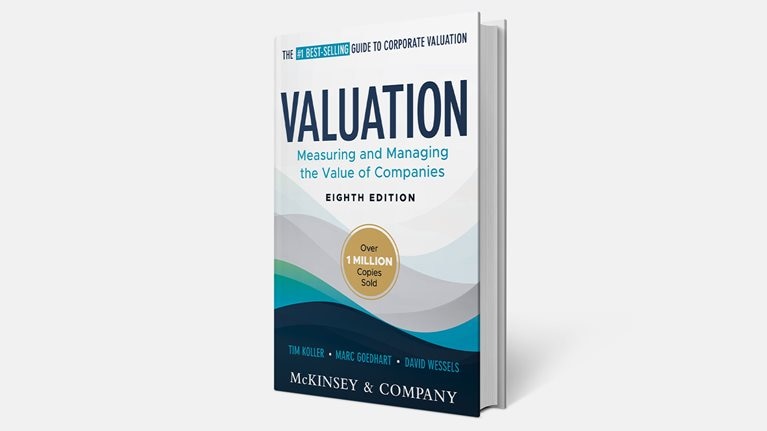Communicating with investors is a delicate task requiring transparency, consistency, and a simple story. But the messaging shouldn’t target all investors equally. In this episode of the Inside the Strategy Room podcast, four experts discuss how to maximize the impact of investor relations. Jay Gelb and Werner Rehm colead McKinsey’s work in investor relations and communications; David Honigmann is an expert in organizational and interpersonal communications; and Karl Mahler is the former of head of investor relations at Hoffmann-La Roche. This is an edited transcript of their conversation. For more discussions on the strategy issues that matter, follow the series on your preferred podcast platform.
Sean Brown: What are the key principles that should guide how companies approach investor relations?
Werner Rehm: First, the goal of investor relations should be to align the share price with the intrinsic value of the company. It’s not helpful to be below that value, obviously, but it’s also not helpful to be above it, because at some point the share price will come down to what the company should be worth and that can happen quickly.
It’s also important to think about which investors to talk to, because you won’t please them all. You will have long-term investors and momentum players, and focusing on intrinsic investors that invest in the long-term strategy matters most. These are the owners of the company, and they deserve not only an honest assessment of financial and operating performance but to be apprised of any bad news.
We also think that content should dominate style. Some companies make a show out of investor day rather than treating it as an educational session about how and why the company makes money. Investor communications should highlight a deep understanding of the competitive dynamics, product markets, and long-term developments such as how ESG influences your customers’ behavior. Lastly, what’s internal is also external and vice versa, so consistency is important.
Sean Brown: You mentioned intrinsic investors. How do you define them?
Jay Gelb: There are different types of institutional investors, ranging from index funds to traders to what we call intrinsic investors. These investors undertake rigorous due diligence on companies’ ability to create long-term value and tend to build their portfolios from scratch, without taking cues on weighting from benchmarks. They also care deeply about the company’s underlying performance rather than quarterly results and the noise in the marketplace. Oftentimes, they view share price pullbacks as opportunities to increase their positions. This group is also unlikely to trade in and out of your stock. Intrinsic investors are your company’s support base over the long term, and the leadership team should be more open to meeting with them than other investors.
Intrinsic investors care deeply about the company’s underlying performance rather than quarterly results and the noise in the marketplace.
Sean Brown: How do you identify those intrinsic investors?
Werner Rehm: The concept of active share of a fund can be helpful. It’s a mathematical measure of distance from index funds. You can segment investors by who holds your stock for the longest term on average, who has a high active share on average, and so on.
Karl Mahler: In a large company like Roche, our investors were investing $6 to $9 billion. They cannot go into and out of a stock because they would move too much volume. What we did was check regularly to see who the top ten or 15 shareholders were and kept in regular contact with them. These were our intrinsic investors.
Sean Brown: You recently conducted a survey of intrinsic investors. What did the results tell you about how they make their investment decisions?
Jay Gelb: Intrinsic investors are focused mostly on company specifics rather than on industry conditions. For example, they look at your company’s sustainable competitive advantages, your margin profile, and whether the company is an efficient allocator of capital. These investors want to understand your strategy and they focus on long-term value creation rather than short-term trends (exhibit).

These long-term-focused investors also want companies to take risks that will generate attractive returns and they care about management delivering on its objectives. We found that only a small percentage of intrinsic investors seek companies with low earnings volatility or a track record of exceeding consensus estimates, because those elements don’t necessarily enhance shareholder value. There are plenty of companies that have volatile earnings but a phenomenal track record of generating value over time, which is what’s ultimately reflected in a company’s valuation.
Sean Brown: What’s the best way for companies to engage with these investors?
Jay Gelb: You need to treat them as sophisticated thought partners. These investors often have good insights based on what they learned from other successful companies that can be applied to your situations. It’s important to be specific, to maintain transparency, and to establish and then maintain your credibility with them. Those are critical points. You should be open about both your successes and your failures. In addition, you should demonstrate to them a deep knowledge of the company and the industry and be clear that you won’t invest in projects or M&A opportunities with low payoff potential.
Karl Mahler: In the end, it’s all about management credibility and capability. The management has to convince the investor market that they are doing the right things. That credibility is as important as your products, because investors want to know that you will use their money in the best way. They want the company’s leaders to be authentic, transparent, and clear about their shortcomings. Sometimes, you simply don’t know what the future will bring and pretending you do is the worst thing you can do. Management should say, “This is what I know, this is what I don’t know, and I will try to manage in the best way I can.”
In the end, it’s about management credibility and capability. Investors want the company’s leaders to be authentic, transparent, and clear about their shortcomings.
David Honigmann: This applies not only when management is talking to investors but when they are talking to employees or the press. Part of authenticity is being consistent across all the communication channels and audiences.
Sean Brown: Karl, during your time at Hoffmann-La Roche, how did you manage all the information—and misinformation—out there and keep the messages to your investors consistent?
Karl Mahler: In my experience, you have super-knowledgeable investors on one side who can go deep and know everything about your products. These are specialists who often work for large funds. Then there are generalists who maybe in the morning invest in a healthcare company and in the afternoon in a consumer goods business. You have to find a way to make your story appeal to both the specialists and the generalists, because you want both to invest in your company.
The best way to do that is to keep the messaging simple and crisp. As soon as the slides start to get full, with one message after another, people get lost. You can stay consistent only if you have a clear and easy-to-understand story. The biggest mistake I see companies make is trying to put out too many messages that are too complicated.
Sean Brown: Sometimes, a bad quarter could lead to a stock sell-off and maybe change intrinsic investors’ value thesis. How should management teams handle that?
Werner Rehm: Every company will occasionally miss its numbers, but it matters why. If you miss because of a one-time tax settlement or another reason that can be easily explained, it doesn’t make much difference in the long term. If you miss because you have a fundamental problem that is likely to continue, that will matter. Sometimes, the share price does not go down because of earnings per share [EPS] but because, for example, M&A news was poorly received. It’s important to understand whether the missed numbers send a long-term signal.
Jay Gelb: You want to avoid being on the quarterly guidance treadmill. That’s challenging for companies, particularly when they don’t meet their numbers and the market reacts. Instead, management should communicate long-term, aspirational targets. I don’t mean EPS guidance or even a range for next year but key performance indicators for top-line or sales growth, margins, customer growth, return on invested capital or equity, or expectations of capital deployment and whether you will reinvest that capital in the business to support growth, in M&A, or return it to shareholders. Remember that a sell-off becomes a buying opportunity for intrinsically oriented investors. As long as the company keeps marching toward its long-term aspirations, long-term investors will remain, despite some interim noise from trading-oriented investors.
Karl Mahler: I think that’s a super-important point. You should focus on the medium-term or long-term outlook. As long as you can convince investors that you are still on the right track, a quarter is not an issue. If, however, earlier messaging pointed in the wrong direction or executives are regularly overpromising, that starts to hurt because investors are no longer sure what the next quarter will bring. But as long as you can convince investors that your long-term path is intact, the short-term blips are just that. Every company has them.
Werner Rehm: It comes back to the first thing that we discussed, which is the role of investor relations in aligning market value with intrinsic value. If you try to maximize the share price by inflating that value, it will come back to you likely in the form of a missed quarter, because at some point you will miss your revenue or top-line estimate.
Subscribe to the Inside the Strategy Room podcast
Sean Brown: How do you frame a strategy story or an equity story for your intrinsic investors?
Werner Rehm: I find that people often overcomplicate this. If you have a good strategy, it should be fairly easy to tell the strategic story. It starts with, what’s the market opportunity? What do customers want? And what do investors need to understand about this? For instance, some markets are moving toward sustainable products and customers are willing to pay a premium. That’s an opportunity, so what is a strategy to capture that?
How you can create value given that context is the next point to cover. What are your sustainable competitive advantages? What makes your company distinctive? Next, you want to present a road map. You may need to build out your sales force in Asia, for example. You may need to reshuffle your resources, assets, capital deployment. Then you want to summarize the impact in broad strokes—not for the next quarter but how you see this industry potentially making a 15 or 25 percent return on capital. You might say, “We think that, over the long term, this segment will grow faster than population plus inflation, and here’s why.”
Once you have outlined the market, how you will create value in that market, how you will implement the strategy, and the impact and risks that you see, it’s useful to show some evidence. In some industries you can’t do it, but in consumer goods or services, for example, you can use test markets. Some insurance companies have said, “We tested our digital strategy in a small country and got higher retention rates.” Sometimes, getting that evidence makes you correct your strategy. Maybe you saw higher retention rates but not as quickly as you wanted. Finally, there is the management team: How is compensation aligned with your long-term strategy? Your story should have a top-down structure of explaining who you are, what you’re going, and how.
Jay Gelb: Interestingly, many companies don’t start with the market opportunity—they go right into the value creation plan or company specifics. When I was an equity analyst, I’d spend an inordinate amount of time thinking about the industry in terms of growth potential, profit opportunity, opportunity for share shifts, and how companies could improve their standing with customers. That’s sometimes overlooked by companies but can be a very impactful starting point.
Sean Brown: Where do sustainability and ESG fit into the story? What do intrinsic investors want to know about how companies approach these issues?
Werner Rehm: In our investor survey of chief investment officers, we asked, “What’s your most common question about ESG?” Consistently, they said, “How do the ESG initiatives drive cash flows in the future?” Intrinsic investors don’t ask about company actions but rather the impact of those actions. At the same time, these investors seem to lack a point of view on the best measures to track the long-term value of ESG investments. There is a real need for investor relations to translate the actions listed in ESG or sustainability reports into what they mean for the strategy—and to put market opportunity first. “Our portfolio is shifting, the customer demand is shifting, regulatory issues are shifting, so here is our strategy.” In some cases, the ESG strategy could determine whether you continue to have a business in 20 years. If you are a car manufacturer and don’t have electric vehicles in your portfolio, in 15 years you likely will no longer be a car company.
The most common question investors have about ESG is, ‘How do the ESG initiatives drive cash flows in the future?’ Intrinsic investors don’t ask about company actions but rather the impact of those actions.
Sean Brown: How do you align the story you share with investors with your internal communications and employee perceptions?
David Honigmann: It’s clear that investor relations dialogues don’t take place in a vacuum. We used to have a model where the IR department talked to investors, procurement talked to suppliers, HR or internal communications talked to employees, government affairs talked to regulators, and so on—those were all separate, bilateral conversations. Now, any conversation held with any group is, at least theoretically, public to every other group. You can’t say something to customers, for example, and not expect investors to find out. Employees discuss transformations or job cuts or strategic pivots in a public forum and it’s immediately out everywhere. Customers consider boycotts. Investors become wary—not necessarily because of job cuts but because the way they’re handled makes management look incompetent. It can also go the other way: companies talk with investors about their ESG plans and that becomes public because NGOs and others hear about it, and the talent you want to attract is suddenly scared off.
What can you do about it? The first thing is to analyze what your investors have heard. In other words, you can’t pretend that other conversations aren’t happening, and you need to know what people are saying. Second, as Werner said, you need a single-story approach for all audiences, because they will hear what you tell other people. That doesn’t mean you don’t tailor your message to what a specific audience is interested in, but the overall story needs to be consistent. Somebody at the company has to own that one story for it to have a coherent structure and clear governance.
Sean Brown: How should the investor relations team engage with other departments to make sure there is a single story?
David Honigmann: It’s not so much about where the solid lines are, but that the dotted lines are as solid as you can make them. If there is one action you could take tomorrow morning, it would be to ask your investor relations team to organize a meeting with internal coms, PR, recruitment, procurement, and marketing to agree on your single story and then maintain a regular cadence of meetings to keep everyone connected. If you don’t do that, one of those communication channels will get blindsided by something that happens in another.
Sean Brown: What’s your sense of the time that the CFO and the CEO, who ultimately own the investor relationships, should dedicate to engaging with intrinsic investors?
Jay Gelb: We think it should be on the order of 10 to 15 percent of their calendar—not just on intrinsic investors but all investor outreach, whether that be investor conferences or hosting investor day. If not managed, these tasks can take up an inordinate amount of their schedule, which is why it’s important for the C-suite to focus on the investors that matter most. If there are one or two standout sell-side equity analysts who are intrinsically oriented around your business, spending time with them as well can be helpful to getting the message out.
Karl Mahler: You have to have regular contact with intrinsic investors. You need to talk to them every quarter, not only when you have an issue. They want regular updates.
Sean Brown: In large companies with many divisions and businesses, is there a risk that the story becomes too complicated?
Jay Gelb: Sure. The structure of how you present the business units to investors is critical. First, that structure should help them understand the economics of each business and how that rolls up to the overall results. Second, it should help investors conduct due diligence on the company. It’s even better if that structure aligns with how the company manages the businesses, because then you can have specific questions or issues directed toward those executives. Lastly, remember that being able to value individual business units separately based on growth, margin, return profile, and sources or uses of cash matters to how investors approach the overall story.
Karl Mahler: In the end, investors will only invest in something they understand. The more business units you have, the more complex it becomes for them. Investors either go into single-theme investments, such as pure-play pharma, or invest in mixed or conglomerate-type companies because they feel that’s appropriate for their risk profile, diversification, and so on. The business is what the business is, but you have to explain, in as easy a way as possible, the business fundamentals.


